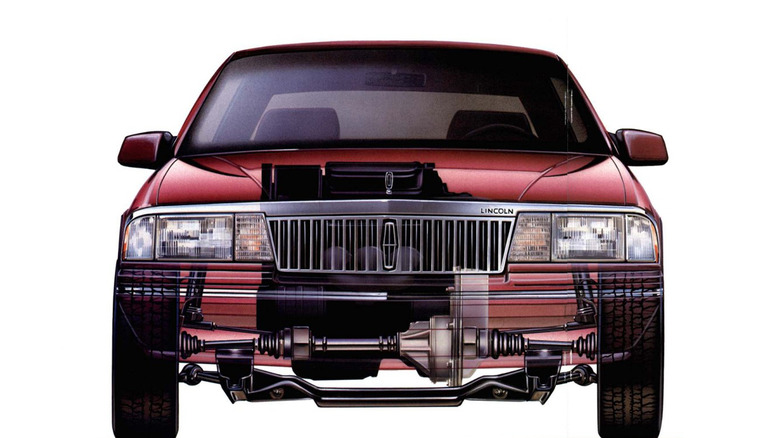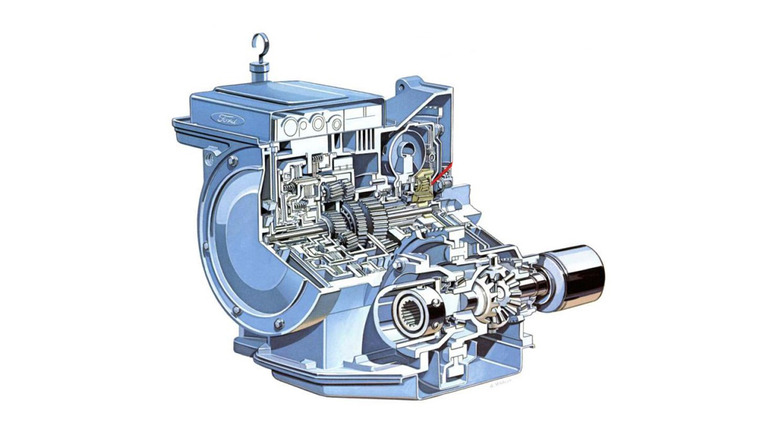Transaxle Vs Transmission: What's The Difference?
Aside from the engine itself, a car's transmission is the most important part of the drivetrain. After all, without a transmission, you aren't going anywhere. Despite being around in various ways, shapes, and layouts since the advent of motorized transportation, transmissions are fairly complex and are much more than a metal box of gears that make the car move. For front-engine, rear-wheel drive cars, like many muscle cars and just about every passenger car until around the late 1970s, the transmission is bolted to the output shaft of the engine and transmits rotational power to the rear differential which gives power to the rear wheels. That's a simple enough concept.
Front-wheel drive cars, however, use what's called a transaxle. While a transmission in a rear-wheel drive car has to deliver power straight back to the wheels, a transaxle has to deliver power to the drive wheels that are situated next to it. As the name suggests, it also acts as an axle for the vehicle.
Compact power delivery
Your average old muscle car likely has the crankshaft (ie where the power comes from) pointed toward the rear of the vehicle. Open up the hood of most economy cars and the engine is often sideways or "transverse mounted." A transaxle is also bolted to the output shaft of the engine, but instead of traveling the entire length of the car, rotational power is delivered down to an automatic or manual gearbox, and then through a short shaft out to the wheels. It's a much more compact way of accomplishing the same thing as a more conventional transmission. That is, getting the wheels to spin.
However, it is not a hard and fast rule that only front-wheel drive cars use a transaxle. The $300,000 800-horsepower super Ford Mustang GTD uses a transaxle to better distribute weight. It even has its own dedicated cooler mounted to the dual-clutch eight-speed gearbox.

